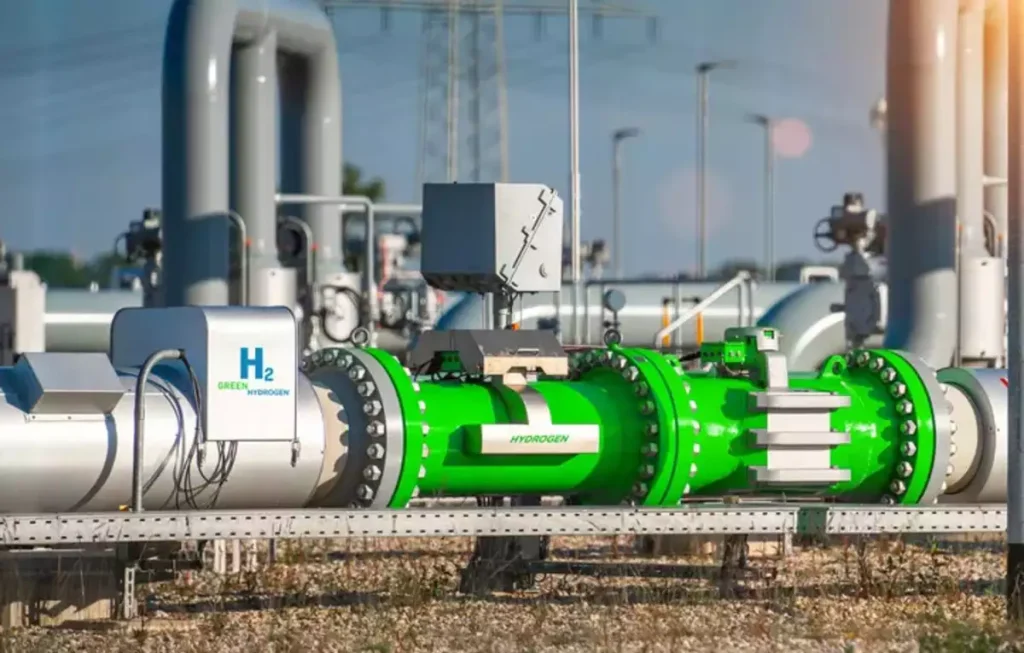Context:
Recently, the Ministry of New and Renewable Energy (MNRE) has exempted export-oriented green hydrogen projects from its solar module shortlist of domestic manufacturers to lower their costs of hydrogen.
More on the news:
- Renewable Energy plants located inside a Special Economic Zone (SEZ) or Export Oriented Unit (EOU) and supplying power exclusively for production plants of Green Hydrogen (or its derivatives), shall be exempt from the purview of the Approved List of Models & Manufacturers (ALMM) for Solar PV Modules, issued by MNRE under the Approved Models and Manufacturers of Solar Photovoltaic Modules (Requirements for Compulsory Registration) Order, 2019, this was done in May earlier this year.
Green Hydrogen
- MNRE defined Green Hydrogen as having a well-to-gate emission (i.e., including water treatment, electrolysis, gas purification, drying, and compression of hydrogen) of not more than 2 kg CO2 equivalent/kg H2.
Grey Hydrogen
- Grey hydrogen is created from natural gas, or methane, using steam methane reformation but without capturing the greenhouse gases made in the process.
- The ALMM requires solar project developers to purchase modules from an approved list, to promote domestic manufacturing.
- Special economic zones are special areas designated within a country that have different business and trade regulations.
- According to the Crisil Data average domestic green hydrogen modules in June 2024 are at least twice as expensive as their imported counterparts.
Importance of lowering the cost of green Hydrogen:
- Lowering the cost of green hydrogen by various hydrogen facilities in India helps to boost exports.
- The lower cost of green hydrogen makes it automatically very easy to expand the demand for green hydrogen and its derivatives.
- India has announced a target of energy independence by 2047 and a net zero by 2070. Green Hydrogen is expected to play a substantial role in achieving these goals.
Initiatives to boost domestic green hydrogen production
- MNRE’s ALMM order, requires most solar projects to source modules from domestic manufacturers, from April 1 this year.
- The MNRE has lowered the cost of green hydrogen to enable them to the cost levels of grey hydrogen.
- Green hydrogen projects are also exempted from the requirement of prior environmental clearance.
- Transmission charges for green hydrogen projects have been waived off for 25 years from the date of commissioning.
Current status of Green Hydrogen production in India:
- Currently, Competitiveness against Grey Hydrogen makes it difficult for Green Hydrogen to be adopted in India and other countries on a large scale.
- India is on track to produce 5 million metric tons (MMT) of green hydrogen per annum by 2030.
- The SIGHT program is a major financial measure under NGHM.
- It aims to bolster domestic electrolyzer manufacturing and green hydrogen production in India.
National Green Hydrogen Mission (NGHM)
- India launched the National Green Hydrogen Mission (NGHM) in January 2023.
- India has declared the goal of becoming energy independent by 2047 to achieve Net Zero emissions by 2070.
- The objective of the Mission is to make India the Global Hub for the production, usage, and export of Green Hydrogen and its derivatives.
- The Ministry of New and Renewable Energy is the nodal body for the mission.
Goals:
- Cumulative reduction in fossil fuel imports over Rs. One lakh crore by 2030.
- Abatement of nearly 50 MMT of annual greenhouse gas emissions by 2030.

